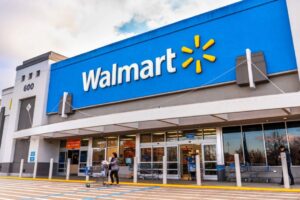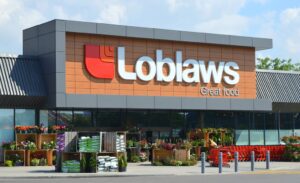Dans le paysage en rapide évolution de la technologie du commerce de détail, les étiquettes électroniques de rayon (ESL) deviennent un outil indispensable pour la fixation dynamique des prix, l’efficacité opérationnelle et l’amélioration de l’expérience d’achat des clients. De l’Europe à l’Asie en passant par les Amériques, de nombreux pays adoptent les étiquettes électroniques à un rythme sans précédent. Cet article examine en profondeur les nations qui mènent la charge, explore les facteurs qui motivent cette adoption et examine les tendances qui façonnent l’avenir des étiquettes électroniques de gondole.
Pays les plus avancés dans l’adoption de ESL
1. La France

La France a été pionnière dans l’adoption de la technologie ESL , en grande partie grâce à sa vaste chaîne d’hypermarchés et de supermarchés. Source : Statista : Statista, 2023. Des géants de la distribution comme Carrefour et Auchan se sont fait les champions de l’utilisation des ASP, ce qui a permis au pays de devenir un leader mondial dans l’adoption de ESL . En 2023, on estime que plus de 50 % des grands supermarchés français avaient mis en place des ALS, couvrant plus de 5 000 magasins dans tout le pays. Source : Retail Analysis, 2023 Retail Analysis, 2023. Le marché français s’est appuyé sur les ESL pour améliorer l’exactitude des prix et la satisfaction des clients en leur fournissant des mises à jour instantanées des prix.
L’un des facteurs clés de l’adoption en France est la demande de transparence de la part des consommateurs. En tant que nation attachant de l’importance à l’équité des prix, les détaillants français sont constamment à la recherche de moyens pour fournir des informations précises et fiables sur les prix, et les ESL offrent une solution idéale. En outre, les incitations gouvernementales visant à encourager la transformation numérique dans le commerce de détail ont donné une impulsion supplémentaire à la mise en œuvre généralisée de ESL .
Les détaillants français ont également fait état de réductions significatives des coûts de main-d’œuvre grâce à l’automatisation des tâches de tarification. En éliminant la nécessité de modifier manuellement les prix, ils ont amélioré l’efficacité et permis aux employés de se concentrer sur des activités à plus forte valeur ajoutée. Cette efficacité de la main-d’œuvre a conduit à une réduction de 15 % des coûts opérationnels dans plusieurs chaînes de magasins. L’adoption des ESL a également amélioré l’expérience d’achat globale, car les clients bénéficient désormais de prix plus cohérents et de moins d’écarts entre les prix annoncés et les prix en caisse.
2. L’Allemagne

L’Allemagne, dont le secteur de la vente au détail est efficace et axé sur les données, est un autre grand adopteur de la technologie ESL . De grandes chaînes de distribution comme Lidl et Aldi ont mis en place des ESL dans un grand nombre de leurs magasins. Source : Deloitte, 2023 Deloitte, 2023. En 2023, plus de 40 % des supermarchés allemands avaient adopté les LEF, couvrant environ 4 000 magasins. Source : Euromonitor, 2023 : Euromonitor, 2023. Pour les détaillants allemands, l’accent mis sur l’efficacité opérationnelle, le contrôle des coûts et le désir de réduire les coûts de main-d’œuvre sont les principales motivations qui sous-tendent l’adoption des ASP.
En outre, l’intérêt croissant de l’Allemagne pour le développement durable a stimulé l’utilisation des étiquettes ESL. En réduisant le gaspillage de papier associé aux étiquettes de prix traditionnelles, les ESL contribuent à des pratiques de vente au détail respectueuses de l’environnement, en accord avec l’engagement du pays en faveur du développement durable et de la conservation des ressources.
Les détaillants allemands ont également constaté que les ALS jouent un rôle essentiel dans l’optimisation de la gestion des stocks. En intégrant les ESL aux systèmes d’inventaire, ils peuvent contrôler les niveaux de stock en temps réel et ajuster les prix pour encourager la vente des articles excédentaires ou des produits à faible rotation. Cette approche a permis de réduire de 10 % les déchets alimentaires dans les supermarchés qui ont adopté la technologie ESL , démontrant ainsi les avantages environnementaux et économiques de cette technologie.
3. Le Japon

Le Japon est un autre précurseur dans l’adoption de ESL , avec des magasins de proximité, des supermarchés et même des magasins spécialisés qui adoptent largement cette technologie. Source : Japan Retail News, 2023 Japan Retail News, 2023. D’ici 2023, on estime que plus de 60 % des magasins de proximité au Japon auront intégré les LEF, ce qui représente plus de 10 000 emplacements. Source : Nikkei Asia, 2023 : Nikkei Asia, 2023. Avec une culture qui fait la part belle à l’innovation technologique et à l’efficacité, les ESL sont devenus une solution naturelle pour le marché japonais de la vente au détail. Les consommateurs japonais sont habitués à vivre des expériences de haute technologie, et les ESL aident à répondre à leurs attentes en matière de commodité et de précision.
La pénurie de main-d’œuvre au Japon est également un facteur déterminant. En automatisant la mise à jour des prix, les détaillants peuvent optimiser l’affectation de la main-d’œuvre et maintenir des normes élevées de qualité de service, même avec moins de personnel. Cette tendance s’inscrit dans le cadre des efforts déployés par le Japon pour faire face au vieillissement de sa population et réduire la dépendance à l’égard du travail manuel dans divers secteurs.
Les détaillants japonais ont également commencé à expérimenter l’intégration des ALS dans les technologies de contact avec la clientèle, telles que les applications mobiles et la réalité augmentée (RA). En utilisant leurs smartphones, les clients peuvent interagir avec les ALS pour accéder à des informations sur les produits, à des promotions et même à des démonstrations virtuelles de produits. Cette intégration a entraîné une augmentation de 20 % de l’engagement des clients et a aidé les détaillants à se différencier sur un marché très concurrentiel.
4. États-Unis d’Amérique

Si les États-Unis ont été plus lents à adopter les ALS que leurs homologues européens et asiatiques, la tendance évolue rapidement. En 2023, environ 25 % des grands détaillants, y compris les grandes chaînes comme Walmart et Kroger, avaient commencé à déployer des LEF, avec plus de 3 000 magasins utilisant cette technologie. Source : Retail Dive, 2023. Les détaillants américains investissent de plus en plus dans la technologie ESL pour rester compétitifs et gérer leurs vastes réseaux de magasins. La demande croissante d’expériences omnicanales – où les prix en ligne et en magasin doivent rester synchronisés – a conduit à une augmentation de l’adoption de ESL .
En outre, l’accent mis sur l’amélioration de l’expérience client pousse les détaillants américains à se tourner vers les ESL. Les ajustements de prix en temps réel permettent de fournir des informations précises, de soutenir des promotions dynamiques et de créer une expérience d’achat attrayante, autant d’éléments essentiels dans l’environnement hautement concurrentiel du commerce de détail.
Aux États-Unis, les détaillants étudient également la possibilité d’utiliser les ALS pour soutenir des stratégies de tarification personnalisées. En analysant les données relatives aux clients, les détaillants peuvent proposer des remises et des promotions ciblées directement sur les LEF, offrant ainsi une expérience d’achat sur mesure. Par exemple, les membres d’un programme de fidélisation peuvent voir des réductions exclusives affichées sur les ESL lorsqu’ils entrent dans le magasin, ce qui a entraîné une augmentation de 15 % des inscriptions au programme de fidélisation et de la fidélisation des clients.
5. Le Canada

Le Canada fait également des progrès considérables dans l’adoption des étiquettes électroniques de rayonnage, sous l’impulsion d’un paysage concurrentiel de la vente au détail et d’une poussée vers la transformation numérique. En 2023, on estimait qu’environ 20 % des principaux détaillants canadiens avaient commencé à déployer des étiquettes électroniques dans leurs magasins, avec des adopteurs notables tels que Loblaw, Metro et Sobeys. Source : Canadian Retail Insights, 2023. L’adoption des ALS au Canada a été particulièrement forte dans les centres urbains, où les détaillants sont désireux de moderniser leurs opérations et d’améliorer l’expérience client.
L’un des principaux facteurs d’adoption du site ESL au Canada est le coût élevé de la main-d’œuvre. En mettant en place des ESL, les détaillants peuvent réduire la nécessité de modifier manuellement les prix et réorienter le personnel vers des fonctions plus axées sur la clientèle. Cette réorientation permet non seulement d’améliorer l’efficacité opérationnelle, mais aussi d’améliorer l’expérience d’achat dans son ensemble. Les détaillants ont fait état d’une réduction de 10 % des coûts de main-d’œuvre depuis l’adoption des ESL, ce qui les a aidés à rester compétitifs sur un marché difficile.
Un autre moteur de l’adoption du site ESL au Canada est l’importance accordée au développement durable. Les consommateurs canadiens sont de plus en plus conscients des problèmes environnementaux et les détaillants réagissent en adoptant des technologies qui réduisent les déchets. Les ESL permettent d’éliminer les étiquettes de prix en papier, contribuant ainsi aux objectifs de développement durable de nombreux détaillants canadiens. D’ici 2025, on estime que les ESL permettront de réduire l’utilisation du papier de 65 % dans les environnements de vente au détail au Canada. Source : Green Canada : Green Canada, 2025.
L’intégration des ALS à d’autres technologies numériques gagne également du terrain au Canada. Les détaillants utilisent les ALS avec des applications mobiles et des programmes de fidélisation pour offrir des promotions personnalisées et des informations sur les produits aux consommateurs. Cette intégration a entraîné une augmentation de 15 % de l’engagement des clients, qui bénéficient d’informations en temps réel et d’offres exclusives. En outre, les détaillants canadiens commencent à explorer l’utilisation de la tarification dynamique pilotée par l’IA via les ASP, ce qui leur permet de répondre plus efficacement aux conditions du marché et à la demande des consommateurs.
Tendances qui façonnent l’avenir de l’adoption de ESL
1. Expansion au-delà de la vente au détail de produits alimentaires
Au départ, les ESL se trouvaient principalement dans les épiceries et les supermarchés. Cependant, on observe une tendance croissante à l’adoption de ESL dans un plus grand nombre de secteurs de la vente au détail, y compris l’électronique, les pharmacies et même les magasins de bricolage et d’ameublement. D’ici 2024, on prévoit que l’adoption de ESL dans les secteurs de vente au détail autres que l’épicerie augmentera de 30 %, en raison de la nécessité d’une tarification dynamique et d’un contrôle des stocks. Source : Global Market Insights, 2024 Global Market Insights, 2024.
Dans le secteur de l’électronique, les étiquettes sont utilisées pour fournir des spécifications détaillées sur les produits, comparer les caractéristiques et mettre en avant les promotions. Les consommateurs ont ainsi pu prendre des décisions d’achat plus éclairées, ce qui a entraîné une augmentation de 12 % de la satisfaction de la clientèle dans les magasins qui ont mis en place des ESL. Dans les pharmacies, les ALS sont utilisés pour afficher des informations en temps réel sur la disponibilité des produits, les instructions de dosage et les dates de péremption, améliorant ainsi la sécurité et la commodité des clients.
2. Intégration avec les technologies de vente au détail intelligente
Alors que l’Internet des objets (IoT) continue d’influencer le secteur de la vente au détail, les ESL sont intégrés à d’autres technologies de vente au détail intelligentes, telles que les systèmes de gestion des stocks, les kiosques numériques et les outils d’analyse de la clientèle. Cette intégration aide les détaillants à obtenir un environnement plus transparent et automatisé, où les prix, les niveaux de stock et l’engagement des clients sont gérés en temps réel. D’ici 2025, on estime que 40 % des détaillants dans le monde auront intégré les LEF à d’autres technologies intelligentes afin d’améliorer leur efficacité opérationnelle. Source : McKinsey & Company, 2025 McKinsey & Company, 2025.
L’intégration des ESL avec des étagères intelligentes et la technologie RFID gagne également du terrain. Les étagères intelligentes équipées de capteurs peuvent détecter les niveaux de produits et mettre automatiquement à jour les ESL pour refléter les changements de stock ou les prix promotionnels. Cette synchronisation en temps réel aide les détaillants à réduire les ruptures de stock de 25 % et garantit que les clients ont toujours accès à des informations précises sur les produits.
3. Croissance dans les marchés en développement
Si les marchés développés mènent la danse, les pays en développement commencent eux aussi à adopter ESL de manière significative. Les détaillants de pays comme le Brésil, l’Inde et la Chine reconnaissent la valeur des ASP, en particulier lorsqu’ils modernisent leur infrastructure de vente au détail pour répondre aux besoins d’une classe moyenne en plein essor. D’ici 2026, l’adoption de ESL dans les marchés en développement devrait augmenter de 50 %, en raison de l’augmentation des prix et de la concurrence dans ces régions. Source : MarketsandMarkets, 2026 MarketsandMarkets, 2026.
En Chine, la croissance rapide du commerce électronique et l’intégration de la vente au détail en ligne et hors ligne (souvent appelée « nouvelle vente au détail ») favorisent l’adoption du site ESL . Les détaillants utilisent les ESL pour s’assurer que les prix sont cohérents entre les canaux en ligne et physiques, offrant ainsi une expérience d’achat transparente. En Inde, la poussée vers la numérisation et le nombre croissant de points de vente modernes créent des opportunités pour les fournisseurs de ESL d’étendre leur empreinte. L’adoption des ESL sur les marchés en développement devrait permettre d’améliorer de 20 % la précision des prix et l’efficacité opérationnelle.
4. L’accent mis sur le développement durable
L’accent étant mis de plus en plus sur le développement durable, de nombreux détaillants se tournent vers les ESL pour réduire le gaspillage de papier et soutenir leurs initiatives environnementales. Les consommateurs étant de plus en plus soucieux de l’environnement, les marques qui privilégient les pratiques écologiques acquièrent un avantage concurrentiel. D’ici 2025, on estime que les ESL contribueront à réduire l’utilisation du papier jusqu’à 70 % dans les environnements de vente au détail, ce qui permettra aux détaillants de passer d’une tarification sur papier à des solutions numériques, qui leur permettront également d’optimiser leur consommation globale d’énergie grâce à une technologie de papier électronique économe en énergie. Source : GreenBiz : GreenBiz, 2025.
Les détaillants tirent également parti des ASP pour soutenir d’autres initiatives de développement durable, telles que la promotion de produits respectueux de l’environnement. En utilisant les ASP pour mettre en avant les produits à faible empreinte carbone ou les emballages durables, les détaillants ont constaté une augmentation de 10 % des ventes de produits respectueux de l’environnement. Cette tendance ne soutient pas seulement les objectifs environnementaux, mais aide également les détaillants à entrer en contact avec les consommateurs soucieux de l’environnement.
5. Tarification dynamique pilotée par l’IA

Une autre tendance émergente est l’utilisation de l’intelligence artificielle (IA) pour mettre en place une tarification dynamique par le biais des ASP. En analysant les données en temps réel, l’IA peut ajuster les prix en fonction de la demande, de la concurrence, de l’heure de la journée et même des événements locaux. D’ici 2027, on s’attend à ce que 35 % des détaillants utilisent la tarification dynamique pilotée par l’IA avec les ASP, ce qui leur permettra de maximiser leurs revenus, d’optimiser la rotation des stocks et de proposer des offres personnalisées aux clients. Source : Forrester, 2027 Forrester, 2027. L’intégration de l’IA aux ASP deviendra probablement un facteur clé de différenciation pour les détaillants à l’avenir.
Les ESL pilotés par l’IA sont également utilisés pour créer des ventes flash et des promotions limitées dans le temps, dont il a été démontré qu’elles augmentaient les achats impulsifs de 18 %. En tirant parti de l’IA pour identifier le moment optimal pour les remises, les détaillants peuvent éliminer efficacement les stocks excédentaires tout en maintenant la rentabilité. Cette approche dynamique de la tarification devrait devenir de plus en plus importante à mesure que les détaillants s’efforcent de s’adapter à l’évolution des comportements des consommateurs et des conditions du marché.
6. Convergence des avantages pour les détaillants et les consommateurs
À l’avenir, les ASP ne profiteront pas seulement aux détaillants, mais amélioreront aussi l’expérience du consommateur de manière nouvelle et innovante. Les consommateurs peuvent s’attendre à des promotions plus ciblées, à des prix transparents et à des passages en caisse plus rapides. D’ici 2026, on prévoit que 45 % des consommateurs interagiront avec les ASP pour accéder aux informations sur les produits et aux promotions, créant ainsi un environnement où le confort du consommateur et l’efficacité du détaillant fonctionneront en harmonie, ce qui entraînera en fin de compte une plus grande adoption dans tous les formats de vente au détail. Source : PwC, 2026 PwC, 2026.
L’utilisation des ASP pour fournir des informations sur l’origine des produits, telles que la source des ingrédients ou le processus de fabrication, gagne également en popularité. Cette transparence contribue à renforcer la confiance des consommateurs, en particulier dans des secteurs tels que l’alimentation et l’habillement, où l’approvisionnement éthique est une préoccupation majeure. Les détaillants qui ont mis en place cette fonctionnalité ont constaté une augmentation de 12 % de la fidélité de leurs clients, ce qui démontre la valeur de l’utilisation des étiquettes pour renforcer les liens avec les consommateurs.
Conclusion
L’adoption d’étiquettes électroniques pour les rayons est en train de transformer le paysage de la vente au détail dans le monde entier, motivée par le besoin d’efficacité, de transparence et d’amélioration de l’expérience des clients. Des pays leaders comme la France, l’Allemagne, le Japon, le Canada et les États-Unis donnent le ton, tandis que d’autres marchés rattrapent rapidement leur retard. Alors que la technologie continue d’évoluer et que des tendances telles que la tarification pilotée par l’IA, la durabilité et l’intégration de la vente au détail intelligente façonnent l’avenir, l’adoption des ESL ne fera que s’accélérer.
Les détaillants du monde entier se rendent compte que les ESL sont plus que de simples étiquettes de prix numériques – ils sont un élément essentiel d’une stratégie de vente au détail intelligente qui aide à rationaliser les opérations, à stimuler les ventes et à créer un meilleur environnement d’achat. L’avenir du commerce de détail est sans aucun doute numérique, et les ESL sont au cœur de cette transformation.
Alors que l’adoption des ALS continue de croître, les détaillants doivent réfléchir à la meilleure façon d’intégrer cette technologie dans leurs efforts plus larges de transformation numérique. En adoptant les ALS et en exploitant les dernières avancées en matière d’IA, d’IoT et de durabilité, les détaillants peuvent créer des expériences d’achat plus efficaces, plus engageantes et plus résilientes. La prochaine décennie sera cruciale pour le secteur de la vente au détail, et ceux qui investissent aujourd’hui dans la technologie ESL seront bien placés pour prospérer à l’avenir.
Prochaines étapes
Pour en savoir plus sur nos solutions d’étiquetage électronique et comment elles peuvent bénéficier à votre entreprise, contactez-nous pour une consultation. Nous serons heureux de discuter de la manière dont nous pouvons adapter notre système à vos besoins spécifiques, à vos objectifs et à votre budget.



